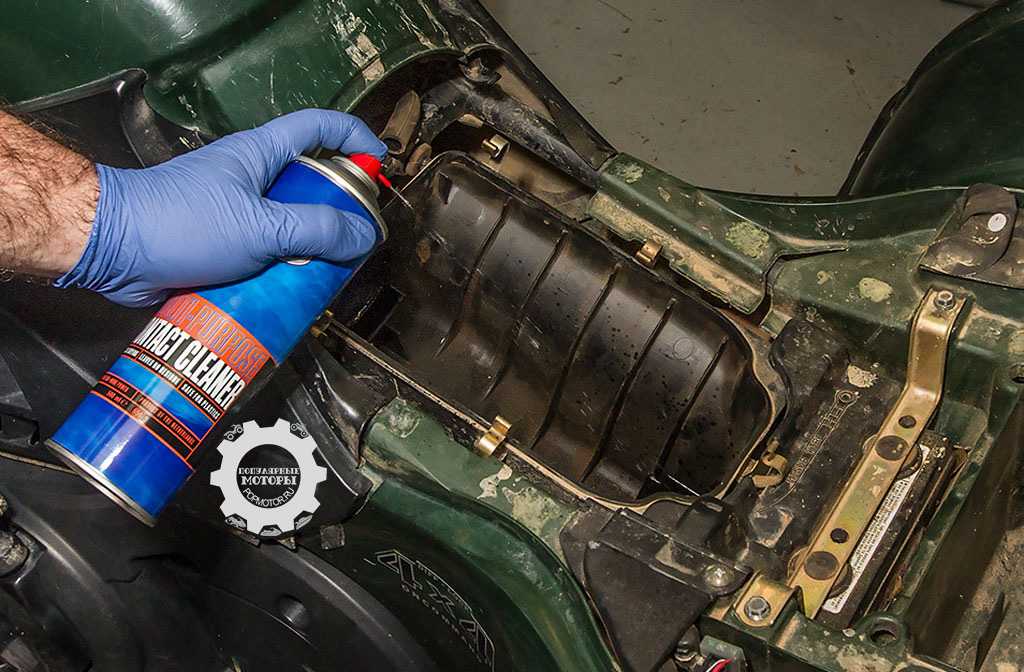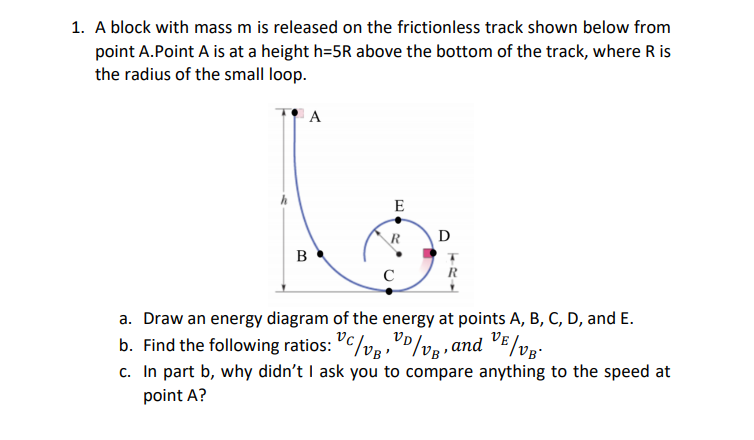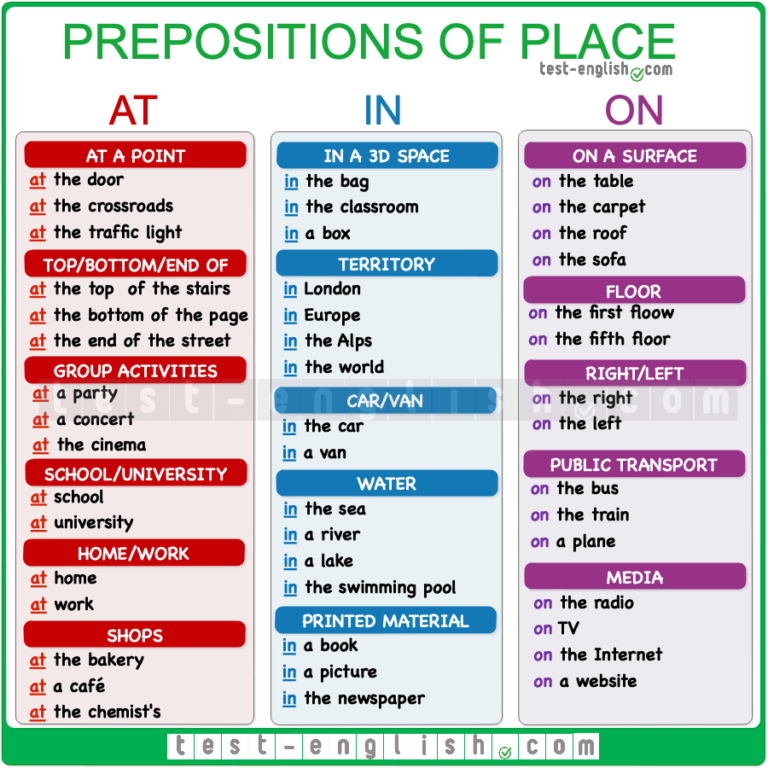Disclosure: We may get commissions for purchases made through links in this post.
Whether you’re an off-road enthusiast or someone with a hobby, an ATV is a reliable vehicle that will help get the job done – whether it’s surviving rough terrain or hauling equipment. ATVs are a long-term investment that you expect to use for many years. They certainly don’t come cheap, and you’ve probably done quite a bit of research before finally choosing the right one for you. It’s important to store an ATV in a safe place to keep it well-maintained.
While ATVs are best stored in a garage where it’s dry, indoor storage is not always possible. If your only option is to store your ATV outside, a proper cover is a must. Exposure to sun, wind, rain, and other elements may cause damage, so a cover is essential to ensure that your quad is protected.
You probably won’t use your ATV regularly, unless you need it for everyday work. But if you only use it occasionally, like during summer months, you must prepare it for long-term storage, mainly if you’re storing it outside. Here are some maintenance tips for outdoor storage.
If you’re preparing your ATV for long-term storage outside, consider these top maintenance tips to effectively preserve your four-wheeler so you can enjoy it for many years to come:
As previously mentioned, an ATV cover will shield your four-wheeler from the outside elements that may cause damage. These elements include not only weather-related factors, but also rodents, insects, dust, and pollen. While you can use a plastic sheet or a tarp as a cover, it’s still best to buy something that’s specifically designed for ATVs. A high-quality ATV cover is more heavy-duty and will do a better job. Synthetic fabric is ideal such as nylon or polyester, since other simple covers may promote rust.
An ATV cover will protect your quad from rain, sun, wind, and other flying debris. Weather can be unpredictable, and your ATV can deteriorate faster in harsh elements. Rust and moisture will be kept at bay, too.
Weather can be unpredictable, and your ATV can deteriorate faster in harsh elements. Rust and moisture will be kept at bay, too.
The seats, cables, tires, and exposed metal parts will have an extra layer of protection when you cover it with a durable, waterproof ATV cover. This industrial grade, waterproof cover (view on Amazon), offers secure protection from all elements. It’s also night reflective and comes with securing straps for your trailer when hauling.
Leaving your ATV uncovered for extended periods may also cause excessive condensation in your gas tank. Thus, it’s not only the ATV exterior that suffers but the interior machinery as well.
Purchase a good, reliable ATV cover, so your four-wheeler is secured, safe, and ready for use whenever the need arises.
An ATV is a cool rig; it would obviously be eye-candy, especially if you store it outside. For added safety, chain your ATV to a post or any stable structure of some sort to prevent it from being stolen. If you can, set up some surveillance cameras in the area where you store your ATV so thieves wouldn’t be as tempted.
If you can, set up some surveillance cameras in the area where you store your ATV so thieves wouldn’t be as tempted.
Outside storage doesn’t necessarily mean you have to let your ATV sit underneath the open sky, suffering from the heat of the baking sun. If you can’t store it in a garage, but you have some space in your backyard, consider buying or building a shed. It’s an excellent solution for outdoor ATV storage if you want more reliable protection. A good, high-quality shed is a sturdy and durable alternative to a garage.
A shed will be particularly useful during the winter months, as cold weather may cause extreme damage to the exterior and fuel system of your four-wheeler. Ice buildup and a frozen engine are things you definitely don’t want to happen if you intend to keep using your ATV for a long time.
Metal sheds and wood sheds are good options, but resin sheds are ideal for your ATV because they don’t rust or rot. Resin sheds will ensure that outside elements won’t creep in and damage your investment.
Resin sheds will ensure that outside elements won’t creep in and damage your investment.
It’s an investment, but it’s also a wise decision to delay corrosion and deterioration. After all, you’re protecting something that may be worth a couple of thousand dollars. Spending a few more bucks to preserve it will benefit you in the long run.
Placing your ATV beside a building or some tall structure lessens its exposure to the elements. You’d essentially be shielding it from wind or any flying debris in a more effective way, rather than purely relying on your ATV cover.
You’d essentially be shielding it from wind or any flying debris in a more effective way, rather than purely relying on your ATV cover.
Keeping it clean goes without saying. Your ATV is a tough vehicle; it will probably go through mud, dirt, rocks, and challenging terrain. It can get pretty filthy if you’ve had a rough ride. Before storing your ATV, you must thoroughly clean it to make sure that dirt and rocks won’t settle in.
Soap it down, rinse it properly, and lubricate it generously. For heavy-duty cleaning, use a pressure washer instead of a regular hose. Pressure washers (view on Amazon) like this one are super useful in removing mud, rocks, leaves, grime, stubborn stains, and even rust. It makes the task much more manageable. Just remember to be careful when using it and aim only at the areas you’re cleaning.
While you’re doing this, keep an eye for any debris that might have gotten stuck in unlikely places. Cleaning your ATV before storing it allows you to have a closer look if there’s any damage so you can act on it right away. After your ATV has dried, wipe metal surfaces and the exhaust pipe with WD-40 to prevent rusting.
After your ATV has dried, wipe metal surfaces and the exhaust pipe with WD-40 to prevent rusting.
Leaving your battery unused for long periods will significantly reduce its lifespan. In some cases, you return to your vehicle and discover that your battery is dead. If you’re storing your ATV for quite a while, use a battery tender to keep your batteries charged.
Unlike trickle chargers, battery tenders equip microprocessor technology that allows them to provide continuous voltage without damaging the battery. This technology prevents battery damage by controlling charging functions, such as avoiding charging a defective battery or overcharging. Battery tenders are essential when preparing your ATV for hibernation.
Regular oil change should be a part of every vehicle owner’s routine maintenance. It keeps the engine healthy and promotes a longer life for your rig. Letting used oil sit in your tank for a long time, especially in the winter season, may cause dirt and debris to settle in. Thus, it’s essential to change your oil to keep your gears and bearings well-lubricated.
Thus, it’s essential to change your oil to keep your gears and bearings well-lubricated.
Before doing an oil change, make sure to clean first the refill location as well as the area around the external oil filter and the dipstick. Doing so will ensure that no dirt and grime will get into the engine. Keep in mind that you should also use the proper oil, and avoid going for the cheap ones that may cause more harm than good.
Furthermore, remove your air filter if your ATV is going on hibernation. Air filters are attractive homes and food storage for rodents, especially if you plan on storing it outside. Use an airbox cover for the meantime.
There can be some confusion about whether to fill up or empty your gas tank before long-term storage. Here’s what to do:

Even when your ATV is not in use, its tires can deflate in just a couple of months. Thus, you have to make sure that they’re adequately inflated before outdoor storage so the tires will be in good condition once you’re ready to use your off-road vehicle. Monitor the tires every few weeks or so, as allowing them to become fully flat can cause damage, which may result in buying new and expensive tires.
Storing an ATV outside can pose more challenges than keeping it sheltered in a garage. Therefore, you must take extra precautions to keep your ATV in optimum condition. By following the advice and maintenance tips listed above, you’re sure to keep your quad safe, secured, and preserved in tip-top shape until you’re ready to use it again.
All-terrain vehicles (ATV) are an investment that provides fun, utility, and a way to access areas that you may not reach otherwise. Properly taking care of your ATV will extend its lifespan and ensure it’s in top form when you need it most. Unfortunately, the lifestyles of most individuals don’t allow full-time or daily use of an ATV. This means you might need safe storage options to keep your vehicle safe when it’s not in use. Whether you’re deciding where to keep your ATV full-time or you need long-term storage options, taking steps to protect your all-terrain vehicle from damage and severe weather is the best way to ensure it maintains top working performance.
Properly taking care of your ATV will extend its lifespan and ensure it’s in top form when you need it most. Unfortunately, the lifestyles of most individuals don’t allow full-time or daily use of an ATV. This means you might need safe storage options to keep your vehicle safe when it’s not in use. Whether you’re deciding where to keep your ATV full-time or you need long-term storage options, taking steps to protect your all-terrain vehicle from damage and severe weather is the best way to ensure it maintains top working performance.
In this complete guide to ATV storage, we’ll cover the following areas:
Sometimes called four-wheelers or quads, all-terrain vehicles are as varied as the owners who ride them. Whether you ride for sport, work, or simply to access and maintain rough terrain on your property, there is likely an ATV that will take you practically anywhere you want to go. Like all types of motorized vehicles, ATVs are made with a variety of materials that have different care levels and come in many shapes and sizes. ATV size is listed in cubic centimeters (cc) and refers to the size of the engine. However, it’s safe to assume that ATVs with larger motors and heavy suspension are often larger vehicles that will require more room for storage. These are the most common types of ATVs:
Whether you ride for sport, work, or simply to access and maintain rough terrain on your property, there is likely an ATV that will take you practically anywhere you want to go. Like all types of motorized vehicles, ATVs are made with a variety of materials that have different care levels and come in many shapes and sizes. ATV size is listed in cubic centimeters (cc) and refers to the size of the engine. However, it’s safe to assume that ATVs with larger motors and heavy suspension are often larger vehicles that will require more room for storage. These are the most common types of ATVs:
Utility ATV
Designed and built to handle heavy jobs, utility quads are often used in work settings for plowing or hauling heavy equipment. Used in agricultural, ranch, and even construction settings, utility ATVs typically have lower suspension than most ATVs and a large motor ranging from 250cc to 700cc. They are also popular for hunting on rough terrain and for recreation.
Sport ATV
Like the name implies, sport quads are generally used for recreation. They’re built for speed, jump capability, and turns. While sport ATVs appear more streamlined and compact than utility ATVs, they have the same range of motor sizes from 250cc to 700cc. Sport ATVs are built to be light and are typically slightly smaller than utility vehicles with the same size motor. Sport ATVs can be outfitted with many accessories you may not use all the time. Consider your accessories and gear when determining the amount of storage space you need for your ATV.
Youth ATV
These models are made for children and teens, so you can expect them to be smaller than other types of ATVs. Youth ATVs can be sport models or utility models. They range in size from 50cc to 125cc and usually have weight limits that don’t exceed 100 to 150 pounds. Youth ATVs are designed to automatically shut off if the rider falls as a way to help prevent serious injury. However, it’s still essential to ensure you invest in all the necessary safety equipment for young ATV riders.
However, it’s still essential to ensure you invest in all the necessary safety equipment for young ATV riders.
Side-by-Side ATV
Sometimes called SxS or rhinos, side-by-side ATVs are more like golf carts in their ability to carry passengers and cargo. They have the strong suspension of sport quads and large motors to navigate rough terrain with all the hauling power you need. Side-by-side models are often classified as utility terrain vehicles (UTVs) instead of ATVs because of their ability to carry up to six passengers, the roll cage protection, and the option for six wheels instead of four. These vehicles are typically longer, wider, and taller than ATVs, which means they require more storage space. With larger motors, you can expect them to be heavier as well.
Entry-Level ATV
One step above a youth model, these ATVs are designed for beginners. Entry-level ATVs are smaller vehicles with smaller motors ranging between 125cc and 250cc. The lower power and smaller size make them easy to handle while riders acclimate to gaining the skills needed for riding safely. Entry-level ATVs are available in both utility and sport models.
The lower power and smaller size make them easy to handle while riders acclimate to gaining the skills needed for riding safely. Entry-level ATVs are available in both utility and sport models.
Utility Sport ATV
As the name suggests, this model brings together the features of sport quads and utility quads for a more versatile machine. These vehicles provide the speed and suspension of sports vehicles and the pulling power of utility vehicles with engines that range from 250cc to 800cc.
High-Performance ATV
If you’re looking for speed in an ATV, then high-performance is the way to go. These machines are built with large motors designed for movement across sand and rocks or hills and mountains. Engine sizes range between 350cc and 700cc.
You wouldn’t leave your car sitting outside unprotected for several months at a time if you weren’t driving it. Your ATV needs proper protection when it’s not in use, as well. The outdoor elements can be harsh on any type of material, and you want your ATV to stay in pristine shape for as long as possible. There are a variety of reasons you may decide to store your ATV for an extended period of time. Additionally, the way you store your ATV between uses can keep your vehicle looking and driving like new for years to come. These are the most common ATV storage reasons:
The outdoor elements can be harsh on any type of material, and you want your ATV to stay in pristine shape for as long as possible. There are a variety of reasons you may decide to store your ATV for an extended period of time. Additionally, the way you store your ATV between uses can keep your vehicle looking and driving like new for years to come. These are the most common ATV storage reasons:
Some ATV owners use ATVs for various activities during the winter months. For instance, accessories like detachable show plows and trailers can make your ATV a useful winter tool. Still, riding your ATV during cold weather can be a bit less pleasant than during the warmer months. This usually means that even when you don’t put your ATV to bed for the entire winter, you’ll likely be riding it less during those freezing days. Winter storage for the entire season or long periods of time will require you to winterize your ATV before storage.
While this doesn’t fall in the category of long-term storage, your ATV does need a safe place to park while you’re not riding it. The body of your ATV is largely composed of plastic, rubber, and other materials that can sustain damage when continually exposed to outdoor elements. Additionally, while the motor is typically covered, many important hoses and components are at least partially exposed. Not all ATV owners have a suitable space at home for daily storage.
The body of your ATV is largely composed of plastic, rubber, and other materials that can sustain damage when continually exposed to outdoor elements. Additionally, while the motor is typically covered, many important hoses and components are at least partially exposed. Not all ATV owners have a suitable space at home for daily storage.
When your ATV is outdoors without a tightly fitted, waterproof cover, it can sustain damage from daily weather that builds up over time. The sun causes damage to seats, cables, tires, and grips. Rain causes exposed metal parts to rust more quickly. Harsh weather can also cause damage if limbs, twigs, or other debris is blown against your ATV. The location you choose for daily storage may have the most impact on how much wear your ATV sustains over time.
If you’re accustomed to keeping your ATV at home, then you likely want a safe storage option with proper protection if you’ll be away for a considerable period of time. Business travel, military deployment, extended vacation, or seasonal homes all provide a reason for you to find adequate, potentially long-term storage options for your ATV. Seeking public storage options, like a storage facility or other storage options where you know your ATV will be safely locked away, can provide you with peace of mind when you’re not home to ensure your vehicle won’t be damaged.
Seeking public storage options, like a storage facility or other storage options where you know your ATV will be safely locked away, can provide you with peace of mind when you’re not home to ensure your vehicle won’t be damaged.
Safety is an important element of responsible ATV ownership. Helmets, proper foot protection, and other safety gear are available to help keep you and your family safe while using ATVs. This equipment is even more vital when young or inexperienced drivers are involved. For many ATV owners, fun accessories are part of the ATV package, as well. Keeping your gear with your ATV provides you with easy access to everything you need when it’s time to ride. That’s why some ATV owners choose to seek storage options that provide extra room for gear. While you might find a way to safely store your ATV outdoors or in a shed at home, most accessories are only properly stored indoors.
Will most ATVs require the same size storage space?
No, utility ATVs are typically slightly larger than sport ATVs, and quads with larger motors are larger than those with smaller motors. Perhaps the most notable storage issue is the fact that the widest ATV in practically any range isn’t necessarily the longest.
Perhaps the most notable storage issue is the fact that the widest ATV in practically any range isn’t necessarily the longest.
The way you store your ATV depends largely on your budget, your preferences, and the availability of secure storage around your home. The size of your ATV will also make a significant difference in your ability to find adequate storage options. We’ve mentioned that ATV sizes are directly related to the motor size. A bigger motor typically means a bigger vehicle. Here’s how you can expect your ATV’s size to correlate to its motor:
| Vehicle | Engine Size | Typical Width | Typical Length |
| Youth ATV | 50cc | 30-35 inches | 48-60 inches |
| 90cc | 35-40 inches | 56-61.5 inches | |
| Beginner ATV | 150cc | 32-43 inches | 60-73 inches |
| 200cc | 40-43 inches | 65 – 70 inches (though the longest reaches 79) | |
| Low to Mid-Range Adult Models | 250cc | 40-42 inches | 66-76 inches |
| 350cc | 41-45 inches | 76-84 inches | |
| Average-Sized Adult Models | 400cc | 42-48 inches | 72-84 inches |
| 500cc | 46-48 inches | 71. 5-94 inches 5-94 inches | |
| Large Models | 700cc | 46-48 inches | 72-93 inches, with most falling in the range of 82-85 inches |
| 800cc | 46-48 inches | 83-94 inches | |
| 1000cc | 46-48 inches | 84-95 inches | |
| Side by Side | 59-64 inches | 84-95 inches |
An empty spot in your garage at home could be a great place to store your ATV, assuming you have space to ride at home or a truck/trailer big enough to haul it. However, not every ATV owner has a spacious garage with extra room. Luckily, there are several types of storage solutions suitable for ATVs. Whether you’re storing your ATV near your home or near your favorite riding location. Consider these ATV storage options.
While outdoor storage isn’t optimal for your ATV, sometimes it’s all that’s available. Luckily, there are ways to protect your ATV from the elements even when you store it outdoors during the coldest months of the year. Outdoor storage tips are useful for both daily storage and long-term ATV storage. Avoiding long-term exposure to the elements is one way to keep your 4-wheeler in peak condition. So use these tips to maximize protection when storing your ATV outdoors.
Outdoor storage tips are useful for both daily storage and long-term ATV storage. Avoiding long-term exposure to the elements is one way to keep your 4-wheeler in peak condition. So use these tips to maximize protection when storing your ATV outdoors.

ATV Storage inside a completely enclosed building provides you with the most protection available, especially when you need long-term storage options. Enclosed storage could be near your home in space in your garage, a shed, a barn, or another building on your property. Many ATV owners seek storage units for ATV storage. A 5′ x 20′ storage unit will provide sufficient space for most ATVs. Larger units will provide you with space to store more than one vehicle or an abundance of accessories or gear that goes along with your quad. Even when using enclosed storage, it’s important to properly prepare your vehicle before storing it for long periods of time.
Even when using enclosed storage, it’s important to properly prepare your vehicle before storing it for long periods of time.
Covered storage provides a medium range of protection between outdoor storage and indoor storage. If you have an open roof or even a structure that will allow you clearance to park your ATV, then a roof will provide considerable protection from the elements. If you’re using covered ATV storage, it’s best to also use a high-quality, fitted cover for additional protection. A chain and security camera could be a good investment to prevent vandalism and theft.
Cold weather decreases the air pressure in tires. Over many months of ATV storage, your tires can become disfigured. Serious tire damage could lead to the need for a new set of tires in the spring (an expense nobody wants). Lifts, jacks, or stands, can be purchased to keep your ATV elevated for winter storage. For some ATV owners, this option could also free up some space for storage in a shed or barn. But if you don’t have the accessories required to lift your ATV for storage, it’s a good idea to rotate your wheels each month to avoid flat spots.
But if you don’t have the accessories required to lift your ATV for storage, it’s a good idea to rotate your wheels each month to avoid flat spots.
If you plan to put your ATV in storage for the entire winter, there are certain steps you should take to prepare your vehicle for long-term storage and minimize maintenance tasks when you’re ready to ride again. Winterizing your ATV helps you avoid potential damage whether you’re storing your vehicle inside a heated garage or keeping it tightly covered outdoors. Take these steps to prepare your ATV for winter storage.
1. Clean your ATV.
Dirt, mud, or other residue left on your 4-wheeler can lead to rust when left for long periods of time. Thoroughly wash and dry your ATV. Lubricate materials that can dry out over time, and ensure your vehicle is completely dry before placing it in long-term ATV storage.
2. Change the oil and fill the gas tank.
When temperatures drop below freezing, your ATV’s liquids thicken. Dirty oil contains debris that could cause engine erosion over time. Empty the oil from your quad or change the oil and filter before putting the vehicle in winter storage. Fill up your gas tank before winter to prevent condensation that can create rust in the gas tank. Add fuel stabilizer to the fuel to prevent breakdown that could cause fuel system issues.
3. Take care of routine maintenance tasks.
Replacing worn-out parts or damaged components before you put your ATV in storage will reduce the odds you’ll need to perform maintenance in the spring.
4. Remove the battery.
Cold weather will drain the power from your battery. While you could charge the battery frequently during the winter, the easiest option is to simply remove the battery while your ATV is in winter storage.
5. Check your tires.
Cold temperatures will decrease the air pressure in your tires, especially when the vehicle sits still for months. Check the air pressure in your tires and inflate them to the proper level. When possible, avoid storing your ATV in areas where standing water can rot your tires.
Check the air pressure in your tires and inflate them to the proper level. When possible, avoid storing your ATV in areas where standing water can rot your tires.
6. Seal openings.
As temperatures drop, small creatures seek warm, dry spots to nest in for the winter. To avoid making your ATV a home for rodents, it’s essential to seal any openings to prevent entry. Rodents can chew wires, nest in your air filter, and tear away at fabrics for nesting materials. Use tape, fabric, or whatever you have available to block the exhaust, intakes, pipes, or any other openings that could allow the entry of small animals or insects.
7. Cover your ride.
If you’re storing your ATV outdoors, a fitted cover designed for your specific ATV is essential. A high-quality cover is a good way to provide your vehicle with an extra layer of protection indoors as well. It will prevent your ATV from being exposed to dust, humidity, and damage from animals, vehicles, or people nearby.
8. Elevate your ATV.
If you have the option, elevated storage is the best option for safe ATV storage. Elevation will prevent tire damage and help make your ATV less accessible to rodents.
You’re probably ready to ride your ATV right away after leaving it in long-term storage. But proper preparation can help you avoid expensive issues and repairs before you even begin the riding season. Take these precautions to ensure your ATV is ready for riding season.
 Rodents chewing through lines or other issues could lead to potential leaks.
Rodents chewing through lines or other issues could lead to potential leaks.If you own an ATV or are thinking of buying one, then storage is an important consideration for protecting your vehicle and extending its lifespan. Keeping your ATV from weather damage will help you avoid damage that could cause accidents or injuries. Whether you use it for recreation or as a tool, your ATV is an important investment you can’t afford to lose. Take better care of your ATV by locating the proper storage options in your area.
Rent Out YourMake $50-$500 each month renting your garage, basement, shed or other storage space
List Your Space
Save 50%Find storage in your own neighborhood at half the cost of a self storage unit
Find Storage
Always wear proper protective clothing to prevent ATV riding from ending up in a long hospital room.
Equipment for each ATV must include:
Do not drive too fast. A four-wheel drive ATV is not a car or a motorcycle. It doesn't respond as well to the driver as a car, it can't lean quickly into a corner like a motorcycle. Remember that when riding an ATV it is very easy to roll over on level ground or even crash into a tree at full speed. For example, if a stump comes across in a field under tall grass, the ATV can run into it, and then the rider will fly over the steering wheel, or at least hit it.
For example, if a stump comes across in a field under tall grass, the ATV can run into it, and then the rider will fly over the steering wheel, or at least hit it.
Never ride an ATV alone. It is best to ride with someone in a pair on two ATVs. There are a lot of situations when a partner is needed. For example, it is very difficult to put an overturned ATV on wheels, and if it covered you from above, then you won’t even be able to get out from under it alone. The second ATV can pull the first one out of the swamp or tow it to the camp in case of a breakdown.
When passing a difficult obstacle, it is better to get out of the saddle and, carefully working with the brake and accelerator, walk alongside. You should also not go too deep into the water - you can fill the motor.

Turn the steering wheel in the desired direction. Tilt your upper body inward and rest your weight on the outside footboard. This will change the balance of traction between the wheels, and the turn will be made smoothly. Turns back are performed in the same way.
ATTENTION!!! ATVs are not designed to make sharp turns or turns at high speed!
If you have to drive on slippery surfaces, drive the ATV as carefully as possible and strictly observe the following rules:

ATTENTION!!! Crossing hills on an ATV is very dangerous! If possible, try to avoid hills when riding an ATV. Any incorrect action while crossing a hill can cause serious injury, or even death!!!
Any incorrect action while crossing a hill can cause serious injury, or even death!!!
If you still need to cross a hill with your ATV, follow these rules:
When descending a slope, you must:
If the machine stalls while climbing, do not let it roll down. Do the following:

The ATV can cross shallow water (the depth should not exceed the level of the footrests). In doing so, the following rules must be observed:

Every owner of an all-terrain vehicle sooner or later faces its breakdown. And it doesn’t matter if you decide to buy an inexpensive ATV or a branded device. Of course, this is an unpleasant situation, but most problems can be fixed by hand. So let's figure out what to do if the ATV does not start.
Constant driving to the limit and improper operation of the equipment often causes a number of breakdowns. Due to high loads, it can fail:
But most often, problems arise due to some little thing, such as low-quality gasoline, lack of oil or improper preservation of equipment.
The first thing a motorist should do if the ATV does not start or stalls is to check the gas tank. If the fuel is idle for a long time, it may evaporate, and if the tank is empty, gasoline should be added. But if there is fuel in it, it is advisable to drain it. Very often, low-quality fuel comes across, which after a while simply ceases to ignite.
Don't forget the oil. If a low-quality liquid was poured into the system, the device will lose dynamics and may even stall. This problem is especially relevant for four-stroke quads, since their power unit must literally “float” in oil.
Another reason why the ATV does not start is improper preservation of the equipment. Even if you leave the device for a day in the garage, it must be prepared for downtime, otherwise starting the engine will be a real test.
Preservation required:

Many riders ignore this simple procedure, but it is the most common cause of starting problems. For example, it is almost impossible to immediately start a “cold” engine. Therefore, the driver begins to methodically press the "start" button, and at this time the battery is discharged. After 10-15 attempts, the battery runs out, and it becomes unrealistic to start the equipment.
Important: In severe frost, it is imperative to carry out conservation of the ATV. If this is not done, condensation will collect at the bottom of the carburetor, and the quadric will have to “warm up” for several days.
ATV won't start due to starter or bad contacts. In this case, follow:
In this case, follow:
But what if the Chinese ATV won't start due to problems with the starter in the field or away from home? In this case, the rider needs to close the relay contacts with a screwdriver. Thus, the rider will be able to start the device bypassing the faulty starter.
No spark is another simple but annoying failure. It usually occurs due to damage to the coil or a break in the wires that go to the candle. Solving the problem is easy.